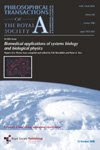BOOK REVIEW: “THE ACCIDENTAL APPRENTICE” By VIKAS SWARUP.
(Note? V. SWARUP is also the author of SLUM
DOG MILLIONAIRE, now also a renowned film of the same name.)
In his
knowledgeable and suspense filled novel, Swarup invents the gripping story of a
fabulously rich Company Founder and Chief Executive Officer (CEO), Vinay Mohan
Acharya, in search of his successor. His search leads him to choose a most
surprising candidate, named, Sapna Sinha, an ordinary sales girl in an electronics
boutique in the centre of Delhi.
However there is
a catch, a twist to the story of course:
Sapna must
accept to undergo seven qualifying tests, tests to be taken from “life" situations.
So begins the
most challenging journey of Sapna’s life and these situations Sapna must face
are not difficult enough, the plot deepens. Are the tests real or is CEO,
Acharya playing a deeper game, one driven by a perverse fantasy?
Swarap unravels
each of his seven “life” stories as test situations in seven easy to
follow chapters.
The resulting lessons learned are worthy Harvard Business Review
(HBR) stuff. The teaching is at least as efficient as the more careful
professorial approach by mainstream HBR, or J. of Leadership and Organisational Studies, contributors. It caught my attention
enough to blog the novel and to return to HBR.
Swarup, of course, has the advantage of the
novelist’s poetic license in creating more daring and dangerous stories than true CEO's or perhaps not? And more work for biographers and novelists
In true
HBR-Harvard Business Review tradition of shock awakening readers’ attention; the
author contends that:
“Leadership is the
one compentency cannot be learnt in Management School.”
Also Cf. Journal
of Leadership and Organisation.
Rules &
Attributes
I.
LEADERSHIP is
illustrated in the context, or against the background of great difficulties and
dangerous situations. In SARUP’s India, one
such extreme situation is set in a background of honour
killings and forced marriages. Here the heroine,
as any other person in real life, can choose to turn their back on a problem
and just walk away or, alternatively, take responsibility, take a responsible
stance and choose to do the right things.
LESSON 1:
-1a. A manager learns
how to do things right but, the Leader does what is right.
It is easy to
imagine that these considerations come straight from the famous business review
(HBR)
According to
SWARUP, It’s all about:
-1b. Instinct &
Conscience. He, or in this case She, instinctively
takes an ethical and moral stance. Many authors of work published in HBR would
probably agree. cf inset
2. Integrity.
Integrity is illustrated,
in Vikas Swarups novel, by the story whereby his heroine, “the apprentice
leader” finds and returns an extremely valuable diamond ring to its rightful
owner, inspite of her own great needs.
He points out in
passing that in the words of his other central character, the Company President
who is seeking his successor that: “From a high building” (an allergy to his
very high position as Company President) you can see people’s heads, but you cannot see within them. He adds that; “people have
become masters at hiding their true nature”.
3. Courage.
The CEO’s fear
is FEAR of FAILURE.
His greatest fear is that of “not taking action”!
Regret, his only regret is having not tried.
We must not let fear limit ourselves.
In his novel,
Vikas Swaraps gives the reader vivid examples of the courage required of a
leader.
4. The Fourth Test or the Blindness of Fame
Here his example
takes the form of unmasking of a traitor. The story takes the form of a so
called blind man who, as it turns out, is not totally blind…
5. Fifth test: Atlas
of Fame, Resourcefulness
The author uses
“the fight against corruption”
Above all he or
she must be a “Master Strategist”
He illustrates
this topic through one of his character’s (Marmeh Ben), “hunger strike”. Which
the “Accidental Apprentice” turns into a massive success.
6. Decisiveness in an extreme situations, here “great sacrifice” via
the case of a kidney donation.
Summary
7a. THE FIRST GREAT SECRET!
“The first secret to
becoming a CEO is knowing that there are no secrets to success.
It is always the result of hard work, concentration, careful
planning and persistence."
-7b.Success is not a
lottery but a system.
Knowing the World is cleverness. Knowing yourself is Wisdom.
-Be yourself;
listen to your heart,
-Do what you
think is right
-Stand up for the
principle you believe in
It comes from:
-a
combination of “intuition” + “Values”
- making
choices and learning from them.
It comes from:
-the ability to handle failure and rejection.
FOOD FOR THOUGHT
“As power
increased so does control diminish. Nothing remains constant."
THIS ABOVE ALL: Enjoy reading V. SWARUP’s great new story “THE
ACCIDENTAL APPRENTICE”, useful learning which will help put flesh your HBR and J of Leadership & Organisation reading.
PS. It now remains to be put into practice. This is where our individual and collective (unfortuneately numerous) flaws and insufficiences appear.
REFERENCE:
“THE ACCIDENTAL APPRENTICE” By VIKAS SWARUP.
Simon &
Schuster © 2013 ISBN978-1-47111-317-8-318-5.
Further Reading: Free Issue of Sage Journal of Leadership & Organisational Studies
LINK: Special Issue_Emerging Research Trends in Leadership












No comments:
Post a Comment
Comments, questions and/or suggestions welcome. If I can be of further, more focused assistance, do not hesitate-ask. Comments are moderated to assist further enquiry and assistance.